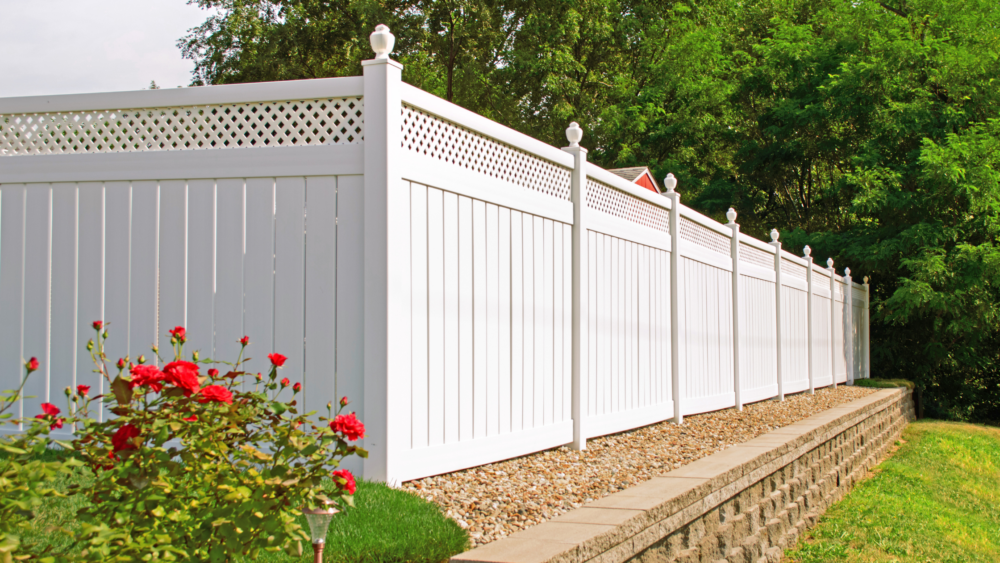Let’s face it, a well-maintained fence not only secures your property but also boosts its curb appeal. However, with the constant battle against weather conditions and wear and tear, keeping your fence in top shape can seem like a daunting task. But worry not! Whether you’re dealing with wood rot or just regular upkeep, we’ve got some straightforward advice that’ll make fence maintenance feel less like a chore and more like a breeze. After all, who doesn’t want their backyard looking its absolute best?
Assessing the Condition of Your Wooden Fence
Your wooden fence is the unsung hero of your property, providing security, privacy, and curb appeal. But like any outdoor structure, it’s constantly exposed to the elements. As time marches on, your place might start showing its age through wear and tear or even rot, putting its overall strength at risk.
That’s why regular fence maintenance is crucial. But hey, before you dive in headfirst, taking a good look at your fence’s condition right now is super important. This approach lets you spot trouble spots early on, so you can line up your maintenance tasks in a smart way.
Signs of Weathering and Rot
Now’s the time to give your fence a thorough once-over. Are there any loose or missing boards? Is the wood discolored, warped, or splintered? All these clues point to weathering and the looming threat of rot. Pay extra attention to areas that are in direct contact with the ground or vegetation, as these are more susceptible to moisture damage.
Rot does more than just spoil the look of your fence; it can also seriously mess with its strength and stability. If you don’t keep an eye on it, this problem can grow bigger and end up costing a lot for repairs, or worse, you might have to replace your fence way sooner than expected. So, it’s important to address any signs of rot promptly.
Identifying Minor Issues
Not all fence issues are major red flags. Some, like loose nails or minor cracks, are relatively easy to fix. However, it’s still important to address them promptly. These small problems can quickly escalate into bigger ones if neglected.
As you assess your fence, make a list of all the minor issues you find. Doing this lets you figure out which repairs to tackle first and makes sure you’ve got all the tools and materials you need ready to go.
When to Consider Replacement
In some cases, fence damage may be too extensive for repairs. If large sections of your fence are severely rotted, warped, or broken, it may be more cost-effective to replace them entirely. The same goes for fences that are nearing the end of their lifespan.
As a general rule, wooden fences last about 15-20 years with proper maintenance. If your fence is approaching this age and showing significant wear, it may be time to start planning for a replacement.
Cleaning Your Wooden Fence: A Step-by-Step Guide
Keeping your wooden fence in top shape definitely means giving it a good clean regularly. So, giving your fence a makeover does more than just boost its looks; it also shields it from the wear and tear caused by dirt, grime, and things like moss or mold. Whether you opt for power washing or hand washing, the key is to be thorough yet gentle.
Preparing Your Work Area
Before you start cleaning, take some time to prepare your work area. Clear away any obstacles, such as potted plants or lawn furniture, that might be in your way. If you have delicate landscaping near your fence, consider covering it with a tarp to protect it from any cleaning solutions or debris.
Next, give your fence a quick visual inspection. Keep an eye out for any loose nails, splinters, or other sneaky hazards that might catch on your cleaning gear or worse, leave you with a nasty injury. Address these issues before proceeding.
Using a Power Washer Effectively
A power washer can make quick work of cleaning your fence, but it’s important to use it correctly. Always start with the lowest pressure setting and work your way up as needed. Hold the nozzle at least 18 inches away from the fence surface and use a wide, sweeping motion.
Avoid focusing the spray on one spot for too long, as this can damage the wood. If you’re unsure about your technique, practice on an inconspicuous area first.
Hand Washing Techniques
If you prefer a more gentle approach, you can clean your fence by hand using a soft-bristled brush and a mild detergent solution. Start at the top of the fence and work your way down, using circular motions to loosen dirt and grime. Rinse the fence thoroughly with a garden hose to remove any residue.
For tougher stains or mildew, you may need to use a specialized wood cleaner. Always follow the manufacturer’s instructions and wear protective gear, such as gloves and eye goggles, when handling these products.
Repairing Damaged Sections of Your Wooden Fence
No matter how much elbow grease you put into keeping your wooden fence clean and well-maintained, it might still show signs of wear and tear as time marches on. Fixing your fence quickly is key if you want to stop more damage in its tracks and keep it standing strong. So, let’s dive into the nuts and bolts of fixing up common fence problems.
Common Types of Fence Damage
Different things, like how old they are, the weather they’ve faced, and how well you’ve taken care of them, can lead to all sorts of issues for wooden fences. Some of the most common issues include:
- Loose or missing boards
- Cracks or splits in the wood
- Rot or decay, especially at the base of posts
- Insect damage, such as termite or carpenter ant infestations
- Leaning or sagging sections due to ground shifts or post damage
Tools and Materials Needed
Before you start any fence repairs, make sure you have the necessary tools and materials on hand. These may include:
- Hammer and nails or screwdriver and screws
- Saw for cutting replacement boards
- Pry bar for removing damaged boards
- Shovel for digging new post holes
- Replacement boards, posts, and hardware as needed
- Wood filler or epoxy for minor cracks and holes
- Sandpaper and wood stain or paint for finishing
Replacing Individual Boards or Posts
If you have isolated damage, such as a single broken board or a rotted post, you may be able to replace just that section. Start by removing the damaged piece, being careful not to disturb the surrounding components. Cut a new board or post to size, then secure it in place using galvanized nails or screws.
For post replacements, you’ll need to dig a new hole and set the post in concrete. Make sure it’s level and aligned with the rest of the fence before the concrete sets.
Applying Protective Coatings to Your Wooden Fence
Slapping a protective coat on your wooden fence is a top-notch move to not only spruce it up but also significantly boost its longevity. Whether you choose a stain, paint, or sealant, the right product can help repel moisture, prevent UV damage, and enhance your fence’s natural beauty.
Choosing the Right Sealant or Stain
When selecting a protective coating for your fence, consider factors like the wood type, climate, and desired appearance. For example, if you have a cedar fence, you may want to use a transparent or semi-transparent stain to showcase the wood’s natural grain and color.
If you live in an area with harsh sun exposure, look for a product with UV inhibitors to prevent fading and discoloration. If you’re dealing with the constant dampness, slapping on a water-repellent sealant could be your knight in shining armor, guarding against moisture havoc and the dreaded rot.
Preparing the Fence Surface
Before applying any protective coating, it’s crucial to properly prepare the fence surface. This typically involves cleaning the fence thoroughly and allowing it to dry completely. If your fence has any existing paint or stain, you may need to sand or strip it first to ensure proper adhesion.
If you’re working with new wood, give it time to weather and acclimate before applying a finish. This allows the wood fibers to open up and better absorb the protective coating.
Application Techniques
The application technique for your chosen protective coating will depend on the product type and manufacturer’s instructions. In general, though, you’ll want to apply the finish evenly and in thin, consistent coats.
Make sure you pick out a top-notch brush, roller, or sprayer that’s just right for the kind of product you’re working with. Start at the top of the fence and work your way down, overlapping each stroke slightly to ensure full coverage. Allow the first coat to dry completely before applying a second coat, if needed.
Maintaining Your Wooden Fence Throughout the Year
Wooden fence maintenance isn’t a one-and-done task. To ensure your fence stays in tip-top shape, it’s crucial to shower it with a bit of love and care all year round. Don’t forget, there are a few crucial upkeep tasks you’ll want to remember.
Seasonal Maintenance Tasks
Each season brings its own set of challenges for your wooden fence. In the fall, clear away any fallen leaves or debris that could trap moisture against the wood. In the winter, remove any heavy snow accumulation to prevent structural damage.
Spring is a great time to give your fence a thorough cleaning and inspection, addressing any issues that may have arisen over the winter. Summer is ideal for applying fresh stain or sealant, as the warm, dry weather allows for optimal curing.
Preventing Vegetation Overgrowth
Adding plants around your fence can really make it pop, but remember to keep an eye on how much they grow. Regularly trim any vines, shrubs, or trees that are encroaching on your fence. This will prevent damage from moisture, insects, and other pests that can thrive in overgrown areas.
If you have plants growing directly along your fence line, consider installing a barrier or border to keep them a safe distance away. This can be as simple as a line of rocks or mulch, or a more formal border made of brick or stone.
Addressing Issues Promptly
So, when it comes down to keeping your wooden fence in top shape, the golden rule is to tackle any problems right away. Whether it’s a loose board, a leaning post, or signs of insect damage, tackling problems early can prevent them from escalating into more serious (and costly) repairs.
Get in the habit of regularly inspecting your fence, even if it’s just a quick visual check while mowing the lawn or gardening. If you notice anything concerning, don’t hesitate to take action or seek professional guidance if needed. If you give your wooden fence a little love and care, it can keep looking beautiful, offer solid security, and add value to your home for many years.
FAQs in Relation to Fence Maintenance
What is the best way to maintain a wooden fence?
Regular cleaning, timely repairs, and applying sealant every 2-3 years keep your fence strong and stylish.
How often should you seal your fence?
To fend off damage, reseal your wooden fence every two to three years. It’s key for longevity.
How do I keep my fence looking new?
Clean it yearly, fix breaks ASAP, and stain or seal it regularly. This combo beats back aging.
How do you protect a wooden fence?
Avoid direct soil contact by trimming grass at its base. Seal annually against moisture and UV rays.
Conclusion
In the grand scheme of things, maintaining your wooden fortress isn’t rocket science. It boils down to spotting issues early on—be it weathering or pesky critters—and tackling them head-on with some elbow grease (and maybe even enjoying it). From cleaning up leaf piles before they trap moisture to giving those boards an extra coat of sealant under the summer sun, these steps are key in prolonging the life of what is essentially an extension of your home’s personality.
So there you have it—a crash course in fence maintenance without breaking into too much sweat or swearing off DIY forever. Remember this; as long as you give it some love now and then (yes, fences need affection too), that barrier standing tall around your slice of paradise will continue doing its job while looking downright fabulous.




